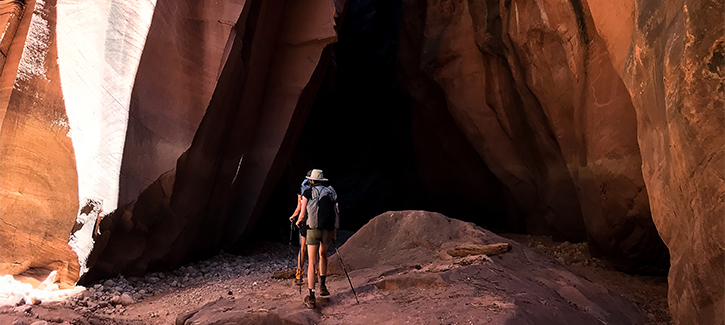Since 2000, Baylor University Campus Recreation’s Outdoor Adventures have been providing students with valuable experiences. This year, the department is offering a handful of exciting adventures over the upcoming spring break.
Cody Schrank, the associate director of Outdoor Adventure and Facilities, said two trips receiving a lot of interest this year are a backpacking expedition in the Paria Canyon and a climbing excursion in Moab, Utah.
“In general, these trips go from Saturday to Saturday and students know they are coming up,” said Schrank. “Almost all our available trips fill up within the first 15 minutes of registration. The more technical journeys like climbing don’t fill up as fast, but backpacking adventures are always incredibly popular.”
Schrank added while these trips aren’t free, Campus Recreation does keep the price reasonable. “If you were to pay for a hike like this in the real world, it would be two or three times more expensive and that doesn’t account for travel,” he said. “The university values what these trips do for students as participants. Without that support they provide, these may be too expensive.”
Unique Experiences
The Paria Canyon expedition has been available for students since 2012 and is among the most popular trips the department offers due to its backpacking component. The expedition takes participants on a five-day hike that eventually ends 40 miles later at the start of the Grand Canyon. The trip also challenges backpackers to cross the Paria River over 300 times through the canyon for opportunities at one-of-a-kind canyon views.
“Backpacking always seems to fill fast because it’s really easy for a student to visualize doing,” said Schrank. “They already do it a lot going from class to class. You feel accomplishment from finishing a hike like that. The desert Southwest is also an idea location for the spring with weather being very manageable at that time due to the low elevations.”
Due to the trip’s physicality, attendees must jog the 2.5-mile Bear Trail around campus in under 25 minutes to prove they can complete the hike. Also, Schrank said there are at least two pre-trip meetings before any event to clearly lay out expectations.
The Path to Success
Baylor’s Outdoor Adventures first began on a small scale. Schrank said in 2011, they didn’t offer nearly as many large trips like they do now. Instead, they built the program up over a years-long span so consistency would speak for itself.
“One of the things that got us going is we would always have a backpacking trip no matter what,” said Schrank. “Also, have a spot you can go to year after year. That reliability builds anticipation for students. Start with a location that works for you and start with a backpacking trip. It’s the easiest to get going vs. kayaking or climbing.”
Schrank also credited the department’s attention to detail throughout the process from marketing the trips through flyers and interest meetings to collaborations with campus partners like the Outdoor Adventure Living-Learning Center.
“Another thing I can point to is the development of our student guide program,” said Schrank. “We have around 10 students going through this so they can help lead these trips. That’s a key aspect. It’s one thing to have an old guy like me to say he will take you backpacking, but having fellow students and colleagues help lead the trips is really beneficial.”
Schrank recommended for other schools also considering outdoor adventures to provide students with an experience they can’t get elsewhere. Also, participants should have a low barrier to entry if physically fit to complete the expedition.
Overall, keeping any trip student-centered with their safety and happiness top of mind is how your school can create successful outdoor adventures like Baylor.
Want more updates and information on how your department can create memorable and impactful outdoor adventures? Sign up for a digital subscription here.











